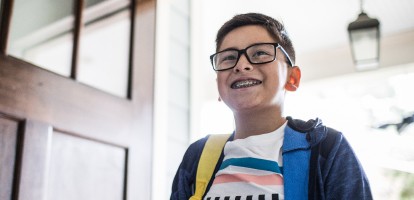January 25, 2022 8:00 am
Personalize Your Summer Program
Learn how to design an effective K–12 summer program that gives each student a chance to meet their personal learning goals.
Thinking about summer school in the middle of winter — with flu + COVID season upon us and beeping phones giving weather advisories — can feel like a distant dream.
Yet, planning an effective summer learning program that works district-wide takes time. From kinder students who might need extra support with foundational skills to soon-to-be high school seniors who need credits recovered, districts have a lot to plan for. While we cannot possibly predict every student’s unique needs (we can barely keep schools open just this week with rising cases and staff shortages!), there are a few simple steps you can take to make the most of the coming summer minutes and allow each student to find a personalized pathway to academic success.
Identify Learning Goals
Summer is sweet but short, and with a small amount of time, it’s best to set specific, tangible goals for your students ahead of time. That way, you know how to staff, what programs you’ll need in place, and teachers will know how to best prepare for a successful summer.
Are there too many students at risk of not graduating on time? Did the pandemic slow your math performance down district-wide? Look at your data, but then don’t focus on the negative. Instead, take those glaring needs and turn them into positive goals such as: cut the percentage of at-risk students in half or increase math fact fluency in grades 3-5, so students are algebra ready — the more specific the goal, the better. Involving students in goal setting is motivating, too. So, consider announcing your goals for students in a way that makes them visible, understandable, and motivating.
Select a Program & Pathway
Once you know your unique learning goals, it’s time to dive into the planning. It’s easy for educators at this point to spend hours and hours on the internet Googling, “How to set up a virtual summer school,” or “how to write a summer learning unit,” or worse, downloading questionably sourced worksheets.
If you catch yourself doing the same: stop. There is no need to design your own program when curriculum designers have taken the time to create research-backed curricula for you. Save yourself some time and select a reputable provider that does the heavy lift. Students get better results, and you get more time by the pool. It’s a win-win situation.

Learning Goal: Graduate on time
Pathway: establish a virtual summer school with Imagine Edgenuity that allows students to recover credits in an adaptive environment that focuses on what they need, not what they already know.

Learning Goal: establish foundational math and reading skills missed during pandemic closures
Pathway: Imagine MyPath, a personalized, adaptive all-in-one intervention program that creates an individual pathway to grade level for each student and suggests targeted reteach lessons.

Learning Goal: enrich learning & prepare for the next grade level
Pathway: choose from our Imagine Learning supplemental suite to create more confident learners while also improving reading, language development, and math skills.
Plan for Progress Monitoring
Trying to “Set it and forget it!” like a Showtime Rotisserie with your summer learning programs sounds tempting, but we know how critical formative assessment is from September to June. We cannot forget that during the summer while we’re daydreaming about hitting the beach over the weekend.
Work with your summer staff and curriculum providers to check for progress midway through the summer semester. If you’re a virtual high school teacher, you can schedule one-on-one check-ins with students or virtual office hours. Be sure to explore your virtual program’s teacher data dashboard to see where students are struggling. If you’re in elementary, be sure to build in opportunities for those one-on-one and small group reteaching opportunities that can make a big difference — a blended learning station rotation model works well for this!
Don’t Forget to Have Fun!
Summer learning pressure to “close gaps” and recover credits can feel overwhelming — but don’t let that anxiety drive your program. Students did their best for nine months and often crave a change of rhythm just like we do.
Try creating a fun theme with incentives that coordinate with your learning goals (Blast off to Summer Math Facts Space Camp anyone?). Most of all, allow the student-teacher relationship to take priority. When students know that staff care, that they see them and believe in them, they’re more likely to work harder (especially when that summer sun is calling).
Summer School Support
From credit recovery and virtual staffing to math enrichment, we’ve got you covered.
